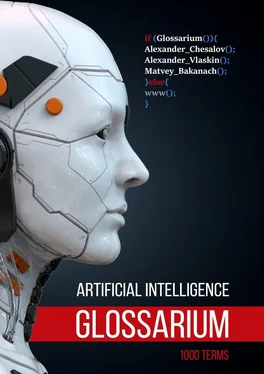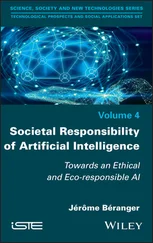Computing system (Вычислительная система)is a software and hardware complex intended for solving problems and processing data (including calculations) or several interconnected complexes that form a single infrastructure.
Computing units (Вычислительные блоки)are blocks that work like a filter that transforms packets according to certain rules. The instruction set of the calculator can be limited, which guarantees a simple internal structure and a sufficiently high speed of operation.
Concept drift (Дрейф концепций) –In predictive analytics and machine learning, the concept drift means that the statistical properties of the target variable, which the model is trying to predict, change over time in unforeseen ways. This causes problems because the predictions become less accurate as time passes [].
Confidentiality of information (Конфиденциальность информации) – a mandatory requirement for a person who has access to certain information not to transfer such information to third parties without the consent of its owner.
Confirmation Bias (Предвзятость подтверждения) –the tendency to search for, interpret, favor, and recall information in a way that confirms one’s own beliefs or hypotheses while giving disproportionately less attention to information that contradicts it.
Confusion matrix (Матрица неточностей) —is a situational analysis table that summarizes the prediction results of a classification model in machine learning. The records in the dataset are summarized in a matrix according to the real category and the classification score made by the classification model.
Connectionism (Коннекционизм) – An approach in the fields of cognitive science, that hopes to explain mental phenomena using artificial neural networks.
Consistent heuristic (Последовательная (непротиворечивая) эвристика) – In the study of path-finding problems in artificial intelligence, a heuristic function is said to be consistent, or monotone, if its estimate is always less than or equal to the estimated distance from any neighboring vertex to the goal, plus the cost of reaching that neighbor
Constrained conditional model (CCM) (Условная модель с ограничениями) – A machine learning and inference framework that augments the learning of conditional (probabilistic or discriminative) models with declarative сonstraints [].
Constraint logic programming (Логическое программирование ограничений) –A form of constraint programming, in which logic programming is extended to include concepts from constraint satisfaction. A constraint logic program is a logic program that contains constraints in the body of clauses. [ 121 121 Сonstraint logic programming [Электронный ресурс] www.definitions.net URL: https://www.definitions.net/definition/Constraint (дата обращения 28.02.2022)
].
Constraint programming (Ограниченное программирование) –A programming paradigm wherein relations between variables are stated in the form of constraints. Constraints differ from the common primitives of imperative programming languages in that they do not specify a step or sequence of steps to execute, but rather the properties of a solution to be found [ 122 122 Сonstraint programming [Электронный ресурс] www.definitions.net URL: https://www.definitions.net/definition/Constraint (дата обращения 28.02.2022)
].
Constructed language (Also conlang) (Искусственные языки) –A language whose phonology, grammar, and vocabulary are consciously devised, instead of having developed naturally. Constructed languages may also be referred to as artificial, planned, or invented languages.
Consumer artificial intelligence (Бытовой искусственный интеллект)is specialized artificial intelligence programs embedded in consumer devices and processes.
Continuous feature (Непрерывная функция) –A floating-point feature with an infinite range of possible values. Contrast with discrete feature.
Contributor (Сотрудник) –A human worker providing annotations on the Appen data annotation platform.
Control theory (Теория управления) –In control systems engineering is a subfield of mathematics that deals with the control of continuously operating dynamical systems in engineered processes and machines. The objective is to develop a control model for controlling such systems using a control action in an optimum manner without delay or overshoot and ensuring control stability [ 123 123 Сontrol theory [Электронный ресурс] www.semanticscholar.org URL: https://www.semanticscholar.org/paper/Modern-control-systems-theory-Leondes-青木/c0fb8d86dec3dc0d09c207fa9888369328b766a9 (дата обращения 06.04.2022)
].
Convenience sampling (Удобная выборка) –Using a dataset not gathered scientifically in order to run quick experiments. Later on, it’s essential to switch to a scientifically gathered dataset.
Convergence (Конвергенция) –Informally, often refers to a state reached during training in which training loss and validation loss change very little or not at all with each iteration after a certain number of iterations. In other words, a model reaches convergence when additional training on the current data will not improve the model. In deep learning, loss values sometimes stay constant or nearly so for many iterations before finally descending, temporarily producing a false sense of convergence. See also early stopping.
Convex function (Выпуклая функция) –is a function where the area above the graph of the function is a convex set. The prototype of a convex function is U-shaped. A strictly convex function has exactly one local minimum point. Classical U-shaped functions are strictly convex functions. However, some convex functions (such as straight lines) do not have a U-shape. Many common loss functions are convex: L2 loss, Log Loss, L1 regularization, L2 regularization. Many variants of gradient descent are guaranteed to find a point close to the minimum of a strictly convex function. Similarly, many variants of stochastic gradient descent have a high probability (though not a guarantee) of finding a point close to the minimum of a strictly convex function. The sum of two convex functions (e.g., L2 loss + L1 regularization) is a convex function. Deep models are never convex functions. Notably, algorithms designed for convex optimization tend to find reasonably good solutions in deep networks anyway, even if those solutions do not guarantee a global minimum.
Convex optimization (Выпуклая оптимизация) –The process of using mathematical techniques such as gradient descent to find the minimum of a convex function. A great deal of research in machine learning has focused on formulating various problems as convex optimization problems and in solving those problems more efficiently. For complete details, see Boyd and Vandenberghe, Convex Optimization [ 124 124 Convex optimization [Электронный ресурс] //en.mimi.hu URL: https://en.mimi.hu/artificial_intelligence/convex_optimization.html (дата обращения 22.02.2022)
].
Читать дальше












